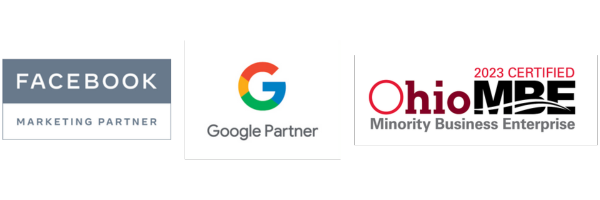
I am a salesperson at heart. I love finding ways to solve clients’ problems. I love the feeling of accomplishment from delivering great work and being recognized by the client.
So I inherently HATE turning away leads. But we do. In fact, about one-third of the opportunities that come to us, we pass on. Most of the time it’s because the prospect is better served by someone with specific industry or technical expertise. In those cases, we gladly make the connection to a better partner.
But sometimes, it’s because the fit is just so wrong or the effort involved outweighs the upside.
At Futurety, we boast a 95%+ retention rate (many agencies operate in the 30-50% range) and many of our very first clients are still with us. It’s not just because we are good at serving our clients, it’s because we have learned when not to pursue a new opportunity, so clients who would churn never become clients at all.
Here are the four types of prospects I have learned to avoid:
The Agency Jumper
If we get a job candidate who has left good job after good job after staying less than a year at each, we know to pass on that resume. Similarly, if a prospect has switched agencies or consulting firms every year or so. And you know those other firms are really good firms, it’s probably the prospect, not the agency. Ramping up an account, whether it’s a small business or a billion-dollar enterprise takes a lot of time, effort, and expense. If you sink a lot of resources into an account and perform well, it’s reasonable to expect a client to stay with you.
There seems to be a perspective, especially in retail, that a company should turn over its vendors every two or three years to keep the agency hungry and ideas fresh. Our perspective is that as long as we execute well, we’ve earned the right to keep your business.
The Tire Kicker
 There are a couple luxury and classic car dealerships just around the corner from our office and I’ve tales about the guys (it’s always a guy), who stops by to drive the Corvette, or Bentley or classic Mustang, but never commits to buying. I’ve had Realtors tell me the same about people addicted to open houses and showings, but never actually buy.
There are a couple luxury and classic car dealerships just around the corner from our office and I’ve tales about the guys (it’s always a guy), who stops by to drive the Corvette, or Bentley or classic Mustang, but never commits to buying. I’ve had Realtors tell me the same about people addicted to open houses and showings, but never actually buy.
Consulting is no different. There’s that prospect that, for whatever reason, likes to meet one more time, get one more SOW, see one more pitch, meet a few more team members. Maybe they will sign, someday, but the time and energy you spend chasing them can better be spent pursuing a prospect excited to work with you. If they do finally buy, they are likely going to be as indecisive and unfocused as a client as they were as a prospect.
When You Know You Are RFP Fodder
RFPs are a funny thing. When you are the preferred vendor and the RFP is written to your skills and experience, it’s because you earned the right to be the trusted vendor. When an RFP is written to favor a competitor it’s because the system is rigged.
I remember when I first discovered RFP databases. I thought the sky was the limit and that we would be a slam dunk for millions of dollars in new projects.
I’ve learned the hard way to be very selective in RFPs. You can spend hundreds of hours responding to an RFP for which you’re never really in the running.
I’ve been surprised plenty of times. We have won two RFPs that we had no “in” on and they resulted in some of our best work. We lost an RFP that looked custom made for us. We still do respond to ones that are dead center in our wheelhouse, but if something is even a little stretch, we don’t put our hat in the ring.
The Future Ex-Client
Your team dreads the pitch meetings. The prospect shows up late, ignores the presentation, asks questions without listening to answers, and then nickel and dimes you on pricing. If your team dreads working with them as a prospect, look out if you win them as a client!

Your team will dread every meeting. You’ll spend all your time balancing angry client calls and meetings with frustrated team members.
Then you think you learned from the last time and you do a similar deal. Or maybe it’s the end of the quarter and you’ve go to hit that number. Or cash is getting tight. Or they were referred by a friend. But you do it again.
There aren’t enough zeroes in any contract to give up that much of your life to unproductive stress.
As someone who has made this mistake in the past, I get it. We kind of become that loser at love from an old country song that keeps making the same bad decision.
I’ve heard agencies “price accordingly” for these engagements. I’ve heard references to the PITA tax. But it’s a fundamental truth that money can’t buy happiness. Raising your costs $10,000 to make up for the stress an unpleasant client is going to cause you doesn’t lower your stress, in fact it just ties you to the client further because you don’t want to give up the revenue.

